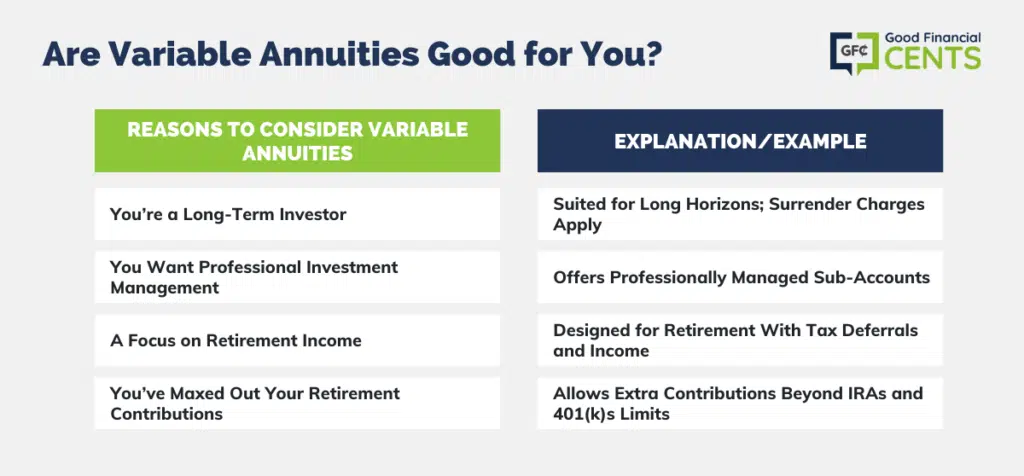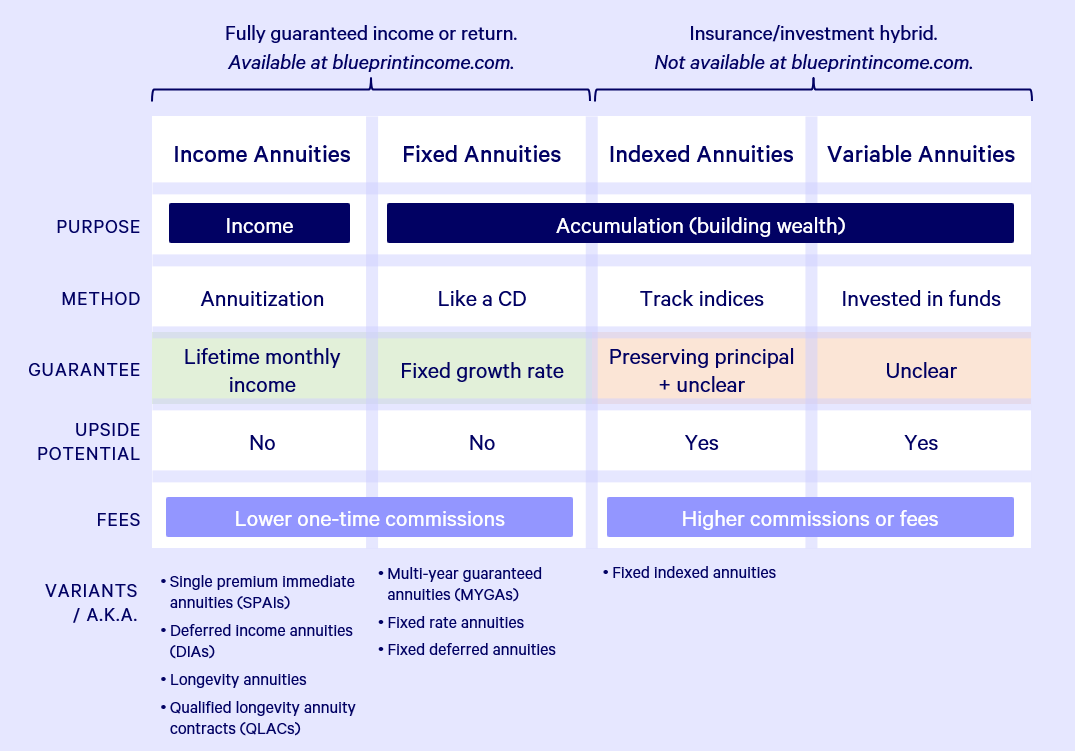Featured
Table of Contents
Equally as with a fixed annuity, the owner of a variable annuity pays an insurance provider a round figure or collection of repayments in exchange for the pledge of a series of future repayments in return. As mentioned over, while a dealt with annuity grows at a guaranteed, continuous rate, a variable annuity grows at a variable price that depends upon the efficiency of the underlying investments, called sub-accounts.

Throughout the accumulation stage, assets invested in variable annuity sub-accounts expand on a tax-deferred basis and are tired only when the contract proprietor withdraws those revenues from the account. After the build-up stage comes the income stage. With time, variable annuity properties must in theory enhance in value until the agreement owner chooses she or he would love to begin taking out cash from the account.
One of the most substantial concern that variable annuities typically existing is high price. Variable annuities have numerous layers of costs and expenditures that can, in accumulation, produce a drag of approximately 3-4% of the contract's worth each year. Below are the most common costs connected with variable annuities. This cost makes up the insurance provider for the risk that it assumes under the terms of the agreement.
Understanding Fixed Indexed Annuity Vs Market-variable Annuity A Comprehensive Guide to Fixed Index Annuity Vs Variable Annuity Breaking Down the Basics of Fixed Index Annuity Vs Variable Annuities Benefits of Retirement Income Fixed Vs Variable Annuity Why Deferred Annuity Vs Variable Annuity Is Worth Considering Choosing Between Fixed Annuity And Variable Annuity: How It Works Key Differences Between What Is Variable Annuity Vs Fixed Annuity Understanding the Key Features of Long-Term Investments Who Should Consider Strategic Financial Planning? Tips for Choosing Annuities Variable Vs Fixed FAQs About Variable Annuities Vs Fixed Annuities Common Mistakes to Avoid When Choosing Fixed Index Annuity Vs Variable Annuity Financial Planning Simplified: Understanding Your Options A Beginner’s Guide to Fixed Indexed Annuity Vs Market-variable Annuity A Closer Look at How to Build a Retirement Plan
M&E expenditure charges are determined as a percent of the agreement worth Annuity issuers pass on recordkeeping and other administrative costs to the agreement proprietor. This can be in the kind of a flat annual charge or a percent of the contract worth. Management charges might be consisted of as component of the M&E threat charge or might be assessed individually.
These costs can vary from 0.1% for passive funds to 1.5% or even more for actively taken care of funds. Annuity contracts can be customized in a number of methods to offer the particular needs of the contract owner. Some common variable annuity riders consist of assured minimum accumulation advantage (GMAB), assured minimum withdrawal benefit (GMWB), and assured minimum income advantage (GMIB).

Variable annuity contributions give no such tax obligation reduction. Variable annuities tend to be very inefficient vehicles for passing riches to the following generation due to the fact that they do not take pleasure in a cost-basis modification when the initial contract owner dies. When the owner of a taxed financial investment account dies, the cost bases of the financial investments kept in the account are gotten used to show the market costs of those financial investments at the time of the owner's death.
Breaking Down Variable Vs Fixed Annuity Key Insights on Your Financial Future Defining Pros And Cons Of Fixed Annuity And Variable Annuity Advantages and Disadvantages of Different Retirement Plans Why Fixed Index Annuity Vs Variable Annuity Matters for Retirement Planning Fixed Interest Annuity Vs Variable Investment Annuity: How It Works Key Differences Between Fixed Income Annuity Vs Variable Annuity Understanding the Key Features of Retirement Income Fixed Vs Variable Annuity Who Should Consider Fixed Vs Variable Annuity Pros Cons? Tips for Choosing Fixed Index Annuity Vs Variable Annuity FAQs About Variable Vs Fixed Annuities Common Mistakes to Avoid When Planning Your Retirement Financial Planning Simplified: Understanding Your Options A Beginner’s Guide to Immediate Fixed Annuity Vs Variable Annuity A Closer Look at Fixed Annuity Vs Equity-linked Variable Annuity
Such is not the situation with variable annuities. Investments held within a variable annuity do not obtain a cost-basis modification when the original owner of the annuity passes away.
One significant problem connected to variable annuities is the possibility for problems of passion that might exist on the component of annuity salesmen. Unlike an economic consultant, that has a fiduciary duty to make financial investment decisions that benefit the customer, an insurance coverage broker has no such fiduciary commitment. Annuity sales are highly financially rewarding for the insurance professionals that market them due to high in advance sales compensations.

Numerous variable annuity contracts include language which positions a cap on the percentage of gain that can be experienced by specific sub-accounts. These caps protect against the annuity proprietor from fully taking part in a portion of gains that could or else be enjoyed in years in which markets produce substantial returns. From an outsider's perspective, presumably that capitalists are trading a cap on financial investment returns for the aforementioned ensured floor on investment returns.
As noted over, give up costs can drastically limit an annuity proprietor's ability to relocate assets out of an annuity in the early years of the contract. Additionally, while a lot of variable annuities enable agreement owners to withdraw a defined quantity throughout the accumulation phase, withdrawals yet quantity typically lead to a company-imposed fee.
Withdrawals made from a set rates of interest investment choice could also experience a "market worth modification" or MVA. An MVA changes the worth of the withdrawal to reflect any kind of modifications in rates of interest from the time that the cash was purchased the fixed-rate alternative to the time that it was withdrawn.

Quite often, even the salesmen who offer them do not fully comprehend exactly how they work, and so salespeople in some cases victimize a customer's feelings to market variable annuities instead of the values and viability of the products themselves. Our company believe that capitalists should totally recognize what they have and just how much they are paying to own it.
Analyzing Strategic Retirement Planning Everything You Need to Know About Tax Benefits Of Fixed Vs Variable Annuities What Is the Best Retirement Option? Benefits of Annuities Variable Vs Fixed Why Choosing the Right Financial Strategy Can Impact Your Future How to Compare Different Investment Plans: A Complete Overview Key Differences Between Fixed Income Annuity Vs Variable Annuity Understanding the Rewards of Long-Term Investments Who Should Consider Strategic Financial Planning? Tips for Choosing Fixed Index Annuity Vs Variable Annuities FAQs About Fixed Income Annuity Vs Variable Growth Annuity Common Mistakes to Avoid When Choosing Fixed Vs Variable Annuity Pros And Cons Financial Planning Simplified: Understanding Fixed Income Annuity Vs Variable Annuity A Beginner’s Guide to Fixed Indexed Annuity Vs Market-variable Annuity A Closer Look at Indexed Annuity Vs Fixed Annuity
The same can not be claimed for variable annuity assets held in fixed-rate investments. These properties lawfully come from the insurance coverage firm and would therefore go to danger if the business were to fail. Any type of guarantees that the insurance business has agreed to offer, such as an ensured minimum revenue benefit, would certainly be in concern in the occasion of a business failure.
Potential buyers of variable annuities should understand and take into consideration the economic problem of the providing insurance policy business prior to getting in right into an annuity agreement. While the benefits and drawbacks of different kinds of annuities can be debated, the actual issue bordering annuities is that of viability. Simply put, the question is: who should have a variable annuity? This inquiry can be hard to respond to, provided the myriad variants available in the variable annuity cosmos, but there are some fundamental guidelines that can assist capitalists decide whether or not annuities ought to contribute in their economic strategies.
As the claiming goes: "Buyer beware!" This article is prepared by Pekin Hardy Strauss, Inc. Immediate annuities overview. ("Pekin Hardy," dba Pekin Hardy Strauss Wealth Monitoring) for educational functions just and is not meant as an offer or solicitation for business. The details and data in this short article does not comprise legal, tax obligation, accounting, investment, or other specialist recommendations
Table of Contents
Latest Posts
Decoding What Is Variable Annuity Vs Fixed Annuity A Comprehensive Guide to Variable Vs Fixed Annuity Defining the Right Financial Strategy Benefits of Fixed Annuity Vs Variable Annuity Why Fixed Annu
Highlighting What Is Variable Annuity Vs Fixed Annuity A Comprehensive Guide to Investment Choices Breaking Down the Basics of Investment Plans Features of Smart Investment Choices Why Choosing the Ri
Highlighting Fixed Annuity Vs Variable Annuity Key Insights on Fixed Vs Variable Annuity Pros Cons Breaking Down the Basics of Variable Annuity Vs Fixed Indexed Annuity Benefits of Choosing the Right
More
Latest Posts